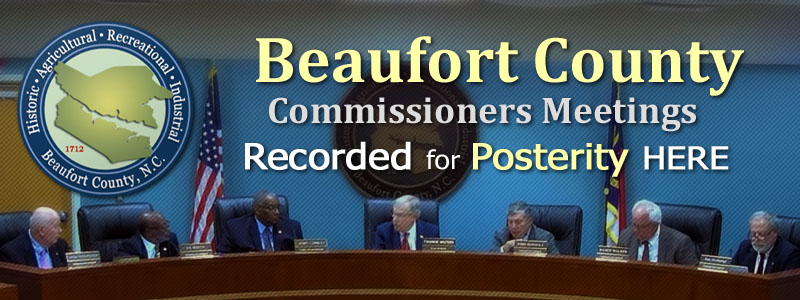Our Community Platform providing Essential Information to Know what is Real
The Voter Discrimination Nobody is Talking About
Publisher's note: This post, by Francis De Luca, was originally published in Civitas's online edition.
When people think of discrimination and voting they quickly go to the where the Left wants them to go and think about young people, poor people and minorities. But there is a more insidious type of discrimination and in 2016 it likely impacted the election here in North Carolina.
With statewide races, including the Governor and State Auditor, being decided by fewer than 5,000 votes, it is highly probable that the over-70,000 voters who used the "Same Day Registration" (SDR) method during one-stop voting decided these and some other 2016 elections. These 70,000 voters are receiving special treatment while the other 4.6 million-plus voters who voted this year follow the law governing registration and voting.
How do these SDR voters receive special treatment? The differences are when their votes are counted and how the state verifies that their registration is valid and complies with the law.
The verification process for traditional voter registration involves mailing the new registrant a voting card that has information about offices the registrant can vote for and their polling place location on Election Day. If the card is not returned to the local board of elections by the post office as undeliverable within 15 days, the registration is verified.
If the card is returned, the local board will mail it again. Both mailings are done via first class mail. If the second mailing is not returned to the local Board of Elections - the registration is verified. If the mailing is returned a second time, however, the registration is denied and the voter is not placed on the voter rolls and can't vote and have their vote counted without taking other steps.
In short, the local board of elections requires two mailings returned by the post office as undeliverable from the registrant's given address to deny the registration, according to the traditional process. To verify the registration it takes at least a 15-day waiting period after the first mailing is sent. If the mail is returned after 15 days, the registration is flagged and the second mailing in the verification process is initiated.
The time to complete this process is why traditional voter registration cuts off so long before Election Day. Local Boards of Elections require this time to complete the process prior to Election Day.
By contrast, let's compare this process to how an SDR voter is treated since the 2008 legislature adopted SDR for the 17-day, one-stop voting period.
Because the county canvass of votes takes place 14 days after the end of early voting, local boards do not have enough time to allow the fifteen-day window to see if the registrants' mailers are returned by the post office with a bad address, for those people utilizing SDR at or near the end of the early voting period. In this case, votes are counted first even if an SDR registrant fails the initial verification mailing.
Furthermore, the state canvass takes place 11 days after the county canvass - still well short of the 30-day window to complete the traditional two mailing cycles.
In other words, thousands of SDR votes could be counted, only for the local board to discover that the registrant had failed two verification mailers after the fact.
Indeed, we have from past studies found that local Boards of Election sometimes waited months after the end of SDR and early voting to start the verification process on SDR voters. These voters have their votes counted even if their registration is not valid.
Also, unlike what happens to a voter who registers the normal way, an SDR voter who fails verification is still counted as a "registered voter" but is simply put in the "inactive" category. This is necessary so the number of votes cast equals the number of voters who showed up. If they aren't on the voter rolls, they can't have voted. If the SDR voter was not added to the voter rolls yet had their vote counted, there would be a mismatch between voters and votes. This little bureaucratic trick is how the State Board of Elections "fixed" the problem of SDR voters failing the verification process.
In 2013 the North Carolina legislature fixed the SDR problem by eliminating SDR along with requiring voter photo ID and other changes in the Voter Identification and Verification Act (VIVA). Unfortunately when the federal 4th Circuit Court in Virginia struck down parts of VIVA, including re-instituting SDR, they returned us to the problem of having votes counted in our election that are not cast by properly registered voters. Other states with SDR make it a practice to prosecute any SDR voter who is found to have falsely registered, while North Carolina does not prosecute fraudulent SDR voters.
Simply put: an SDR voter can walk in, register and vote, and not meet the requirements under North Carolina law to be a registered voter, yet have their vote counted and help determine the outcome of elections in North Carolina.
Legitimate voters will have their votes cancelled by illegitimate voters and this fact calls into question the outcome of close elections such as the one we are still in the middle of in North Carolina. The process discriminates by treating one class of voters differently from another.
It is a problem the legislature will again have to address in 2017.
Go Back
When people think of discrimination and voting they quickly go to the where the Left wants them to go and think about young people, poor people and minorities. But there is a more insidious type of discrimination and in 2016 it likely impacted the election here in North Carolina.
With statewide races, including the Governor and State Auditor, being decided by fewer than 5,000 votes, it is highly probable that the over-70,000 voters who used the "Same Day Registration" (SDR) method during one-stop voting decided these and some other 2016 elections. These 70,000 voters are receiving special treatment while the other 4.6 million-plus voters who voted this year follow the law governing registration and voting.
How do these SDR voters receive special treatment? The differences are when their votes are counted and how the state verifies that their registration is valid and complies with the law.
The verification process for traditional voter registration involves mailing the new registrant a voting card that has information about offices the registrant can vote for and their polling place location on Election Day. If the card is not returned to the local board of elections by the post office as undeliverable within 15 days, the registration is verified.
If the card is returned, the local board will mail it again. Both mailings are done via first class mail. If the second mailing is not returned to the local Board of Elections - the registration is verified. If the mailing is returned a second time, however, the registration is denied and the voter is not placed on the voter rolls and can't vote and have their vote counted without taking other steps.
In short, the local board of elections requires two mailings returned by the post office as undeliverable from the registrant's given address to deny the registration, according to the traditional process. To verify the registration it takes at least a 15-day waiting period after the first mailing is sent. If the mail is returned after 15 days, the registration is flagged and the second mailing in the verification process is initiated.
The time to complete this process is why traditional voter registration cuts off so long before Election Day. Local Boards of Elections require this time to complete the process prior to Election Day.
By contrast, let's compare this process to how an SDR voter is treated since the 2008 legislature adopted SDR for the 17-day, one-stop voting period.
Because the county canvass of votes takes place 14 days after the end of early voting, local boards do not have enough time to allow the fifteen-day window to see if the registrants' mailers are returned by the post office with a bad address, for those people utilizing SDR at or near the end of the early voting period. In this case, votes are counted first even if an SDR registrant fails the initial verification mailing.
Furthermore, the state canvass takes place 11 days after the county canvass - still well short of the 30-day window to complete the traditional two mailing cycles.
In other words, thousands of SDR votes could be counted, only for the local board to discover that the registrant had failed two verification mailers after the fact.
Indeed, we have from past studies found that local Boards of Election sometimes waited months after the end of SDR and early voting to start the verification process on SDR voters. These voters have their votes counted even if their registration is not valid.
Also, unlike what happens to a voter who registers the normal way, an SDR voter who fails verification is still counted as a "registered voter" but is simply put in the "inactive" category. This is necessary so the number of votes cast equals the number of voters who showed up. If they aren't on the voter rolls, they can't have voted. If the SDR voter was not added to the voter rolls yet had their vote counted, there would be a mismatch between voters and votes. This little bureaucratic trick is how the State Board of Elections "fixed" the problem of SDR voters failing the verification process.
In 2013 the North Carolina legislature fixed the SDR problem by eliminating SDR along with requiring voter photo ID and other changes in the Voter Identification and Verification Act (VIVA). Unfortunately when the federal 4th Circuit Court in Virginia struck down parts of VIVA, including re-instituting SDR, they returned us to the problem of having votes counted in our election that are not cast by properly registered voters. Other states with SDR make it a practice to prosecute any SDR voter who is found to have falsely registered, while North Carolina does not prosecute fraudulent SDR voters.
Simply put: an SDR voter can walk in, register and vote, and not meet the requirements under North Carolina law to be a registered voter, yet have their vote counted and help determine the outcome of elections in North Carolina.
Legitimate voters will have their votes cancelled by illegitimate voters and this fact calls into question the outcome of close elections such as the one we are still in the middle of in North Carolina. The process discriminates by treating one class of voters differently from another.
It is a problem the legislature will again have to address in 2017.
| Couple Featured in CJ Stories on Tax Refund Fraud get Federal Jail Terms | Civitas Institute, Editorials, Op-Ed & Politics | Exploring Obama's Self-Definition and our Racial Divide |
Latest Op-Ed & Politics
|
Biden wants to push this in public schools and Gov. deSantis says NO
Published: Thursday, April 25th, 2024 @ 9:19 pm
By: John Steed
|
|
eve 45% of Latinos support mass deportation
Published: Thursday, April 25th, 2024 @ 12:40 pm
By: John Steed
|
|
this at the time that pro-Hamas radicals are rioting around the country
Published: Thursday, April 25th, 2024 @ 8:01 am
By: John Steed
|
|
Pro death roundtable
Published: Wednesday, April 24th, 2024 @ 12:39 pm
By: Countrygirl1411
|
|
populist / nationalist anti-immigration AfD most popular party among young voters, CDU second
Published: Wednesday, April 24th, 2024 @ 11:25 am
By: John Steed
|
|
political scheme behhind raid on Mar-a-Lago
Published: Wednesday, April 24th, 2024 @ 9:16 am
By: John Steed
|
|
how many of these will come to North Carolina?
Published: Tuesday, April 23rd, 2024 @ 1:32 pm
By: John Steed
|
|
Barr had previously said he would jump off a bridge before supporting Trump
Published: Tuesday, April 23rd, 2024 @ 11:37 am
By: John Steed
|






















